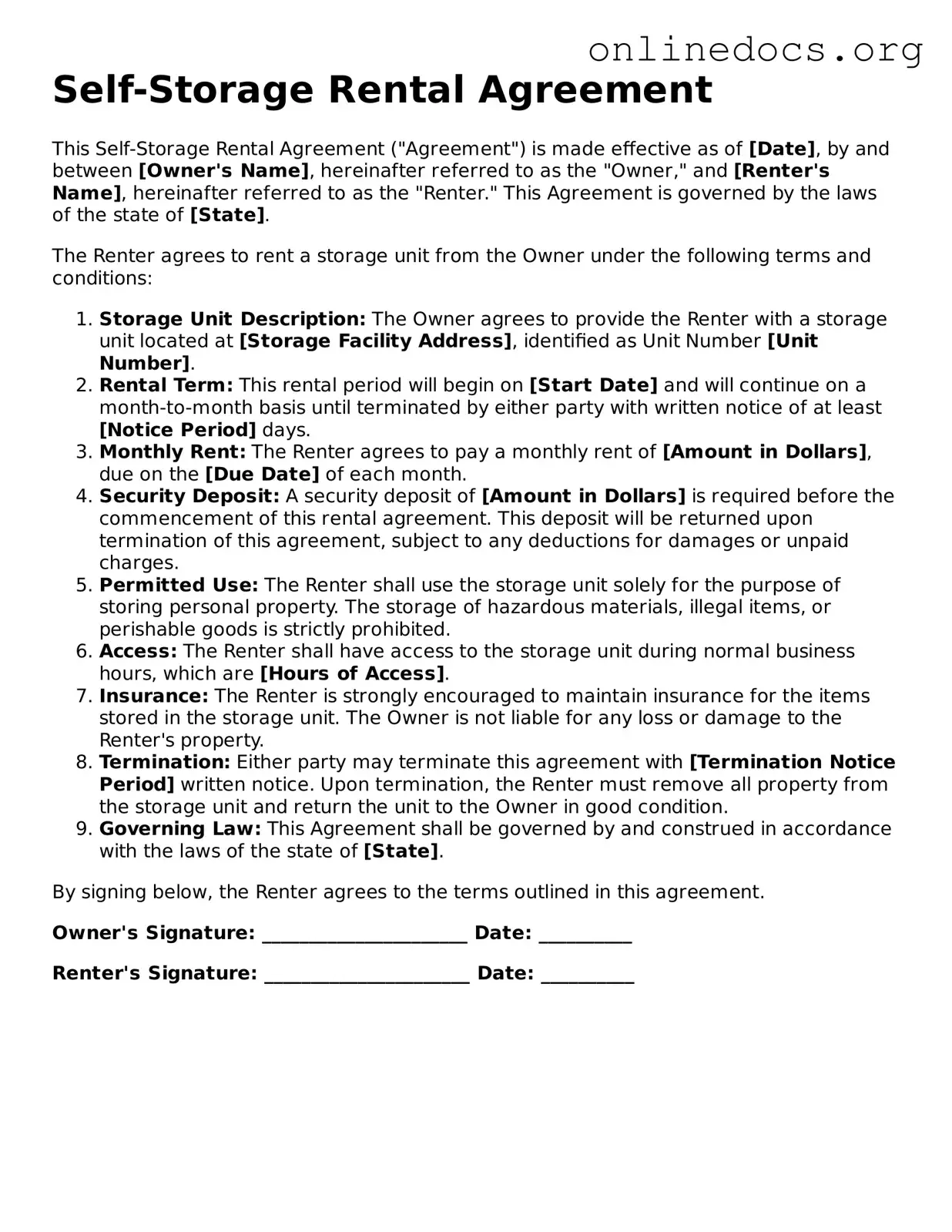The Self-Storage Rental Agreement is similar to a Lease Agreement, which is commonly used in residential and commercial real estate. Both documents outline the terms under which one party (the tenant) can use another party's property (the landlord's). Key elements such as duration, payment terms, and responsibilities are detailed in both agreements. Just like a lease, a self-storage rental agreement specifies the rental amount and the duration of the rental period, ensuring both parties understand their rights and obligations.
A Lease Agreement serves essential functions similar to various rental agreements, and it is crucial in defining the relationship between the landlord and the tenant. Clearly outlining terms such as duration, rental amount, and property usage rules, it ensures both parties are aware of their rights and responsibilities. For those in need of additional resources regarding Lease Agreement forms, they can visit legalformspdf.com for comprehensive information and templates.
Another document that shares similarities is the Commercial Rental Agreement. This type of agreement is used for renting commercial spaces, such as offices or retail locations. Like the self-storage rental agreement, it includes terms regarding the rental rate, maintenance responsibilities, and the duration of the lease. Both documents serve to protect the interests of the property owner while providing a clear framework for the tenant's use of the property.
The Equipment Rental Agreement also resembles the Self-Storage Rental Agreement. This document is used when renting tools or machinery. Both agreements outline the rental period, payment terms, and conditions for use. They also include clauses that address liability and damage, ensuring that both parties are aware of their responsibilities and the potential consequences of misuse.
Similarly, a Vehicle Rental Agreement shares common features with the Self-Storage Rental Agreement. When renting a vehicle, the agreement specifies the rental duration, payment, and any restrictions on use. Both agreements require the renter to adhere to specific terms to ensure the property (whether it be a vehicle or storage unit) is returned in good condition and on time.
The Rental Agreement for a Boat or Watercraft is another document that parallels the Self-Storage Rental Agreement. This agreement outlines the terms of renting a boat, including the rental period, payment, and maintenance responsibilities. Just like with self-storage, the agreement ensures that the renter understands their obligations and the conditions under which they may use the watercraft.
A Parking Space Rental Agreement also shares similarities with the Self-Storage Rental Agreement. This document governs the rental of a designated parking space, detailing the rental amount, duration, and any specific rules regarding the use of the space. Both agreements protect the rights of the property owner while providing clear guidelines for the renter.
Lastly, a Roommate Agreement can be compared to the Self-Storage Rental Agreement. While typically used for shared living arrangements, it outlines the responsibilities and rights of each roommate. Similar to self-storage agreements, it includes details about payment terms, duration, and shared responsibilities, ensuring that all parties are on the same page regarding their living situation.
